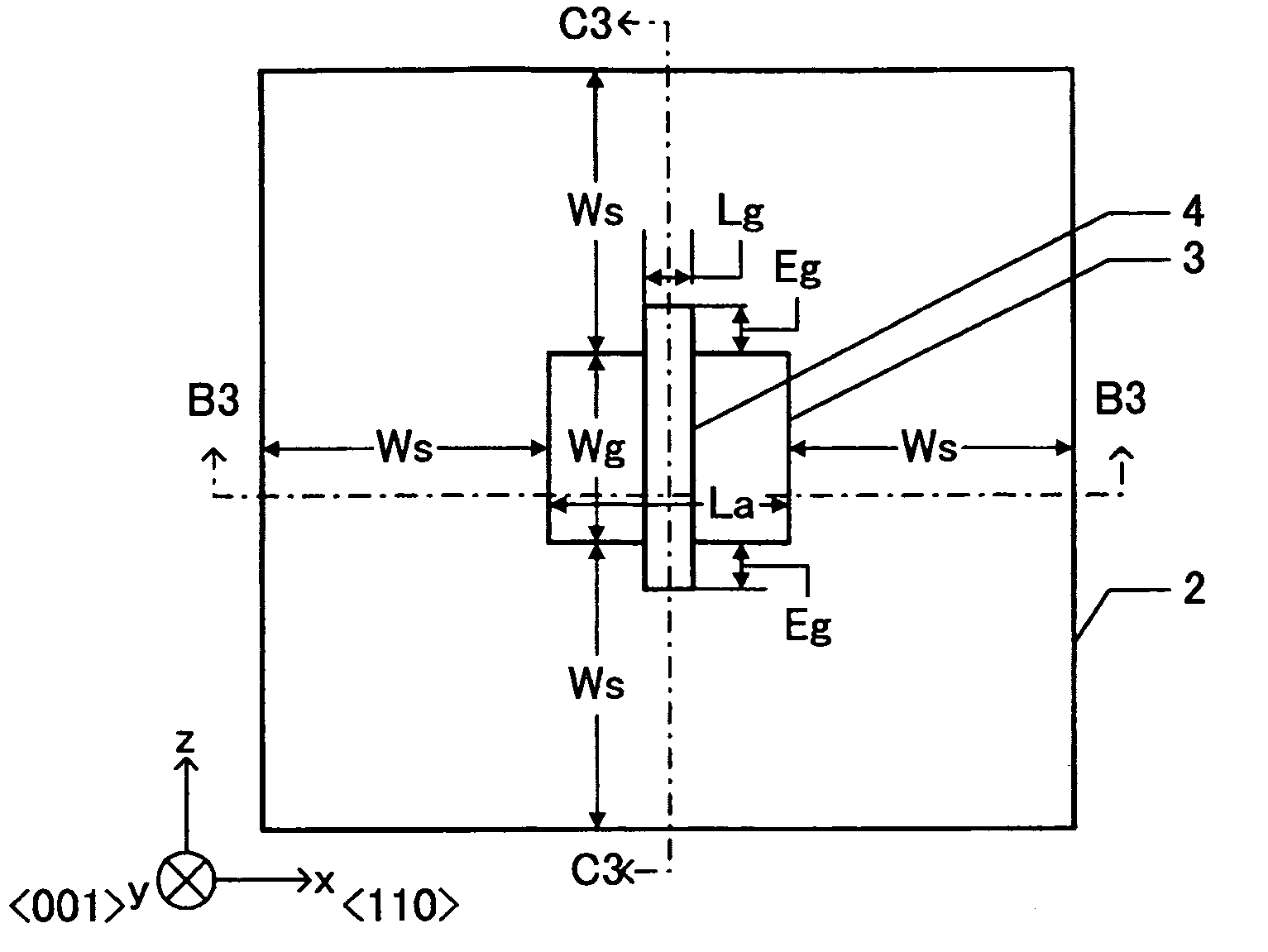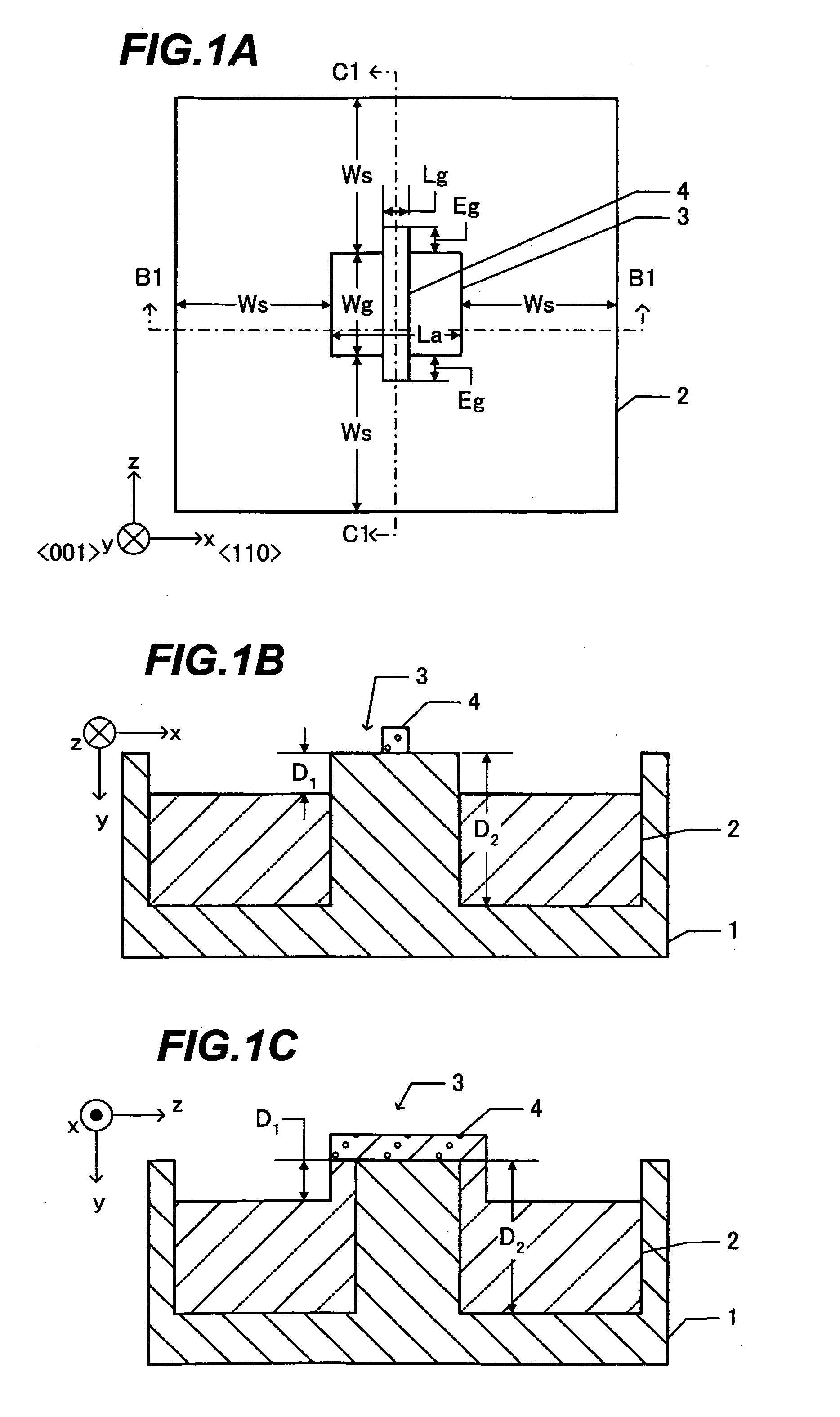Semiconductor device having device characteristics improved by straining surface of active region and its manufacture method
- Summary
- Abstract
- Description
- Claims
- Application Information
AI Technical Summary
Benefits of technology
Problems solved by technology
Method used
Image
Examples
first embodiment
[0045]FIG. 3A is a plan view of a semiconductor device and FIGS. 3B and 3C are cross sectional views taken along one-dot chain lines B3-B3 and C3-C3 shown in FIG. 3A, respectively. The plan view shown in FIG. 3A is the same as the plan view shown in FIG. 1A, and the description thereof is omitted.
[0046]As shown in FIGS. 3B and 3C, a lower insulating film 22 fills a lower space of a trench formed in the surface layer of a semiconductor substrate 1 made of silicon. An upper insulating film 24 fills a space of the trench upper than the lower insulating film 22. The lower insulating film 22 and upper insulating film 24 constitute an isolation insulating film 2. The isolation insulating film 2 defines active region 3.
[0047]The upper surface of the isolation insulating film 2 sinks from the upper surface of the active region 3 by a depth D1. The upper surface of the upper insulating film 24 does not sink under the projected portions of a gate electrode 4 at opposite end portions thereof,...
second embodiment
[0064]Next, with reference to FIGS. 8A to 9B, description will be made on a semiconductor device manufacture method according to the
[0065]As shown in FIG. 8A, a principal surface of a semiconductor substrate 1 made of silicon is thermally oxidized to form a silicon oxide film 10. A thickness of the silicon oxide film 10 is set to 9 to 21 nm, for example, 10 nm. On the silicon oxide film 10, a silicon nitride film 11 is formed having a thickness of 100 to 150 nm, for example, 110 nm. The silicon nitride film 11 is formed by low pressure chemical vapor deposition (LPCVD) using mixture gas of SiCl2H2 and NH3 at a substrate temperature of 750° C. to 800° C.
[0066]As shown in FIG. 8B, an opening corresponding to an isolation insulating film to be formed is formed through the silicon nitride film 11 and silicon oxide film 10 by usual photolithography techniques. A width of the opening is 0.07 μm to 1 μm. Etching the silicon nitride film 11 and silicon oxide film 10 is performed by reactive...
third embodiment
[0096]Next, with reference to FIGS. 10A to 11B, description will be made on a semiconductor device manufacture method according to the
[0097]As shown in FIG. 10A, a lower insulating film 22 is formed by the same processes as those up to the state shown in FIG. 8F of the second embodiment. In the second embodiment, the upper insulating film 24 is deposited after the lower insulting film 22 is deposited. In the third embodiment, prior to depositing the upper insulating film 24, the substrate is immersed in HF aqueous solution having a density of 0.5% for 30 seconds to etch the surface layer of a lower insulating film 22.
[0098]As shown in FIG. 10B, this HF process thins a sidewall portion 22a of the lower insulating film 22 deposited on the inner surface of the trench 15. The subsequent processes are the same as those after the state of the second embodiment shown in FIG. 8G.
[0099]FIGS. 11A and 11B correspond to the cross sectional views taken along one-dot chain lines B3-B3 and C3-C3 s...
PUM
 Login to View More
Login to View More Abstract
Description
Claims
Application Information
 Login to View More
Login to View More - R&D
- Intellectual Property
- Life Sciences
- Materials
- Tech Scout
- Unparalleled Data Quality
- Higher Quality Content
- 60% Fewer Hallucinations
Browse by: Latest US Patents, China's latest patents, Technical Efficacy Thesaurus, Application Domain, Technology Topic, Popular Technical Reports.
© 2025 PatSnap. All rights reserved.Legal|Privacy policy|Modern Slavery Act Transparency Statement|Sitemap|About US| Contact US: help@patsnap.com



